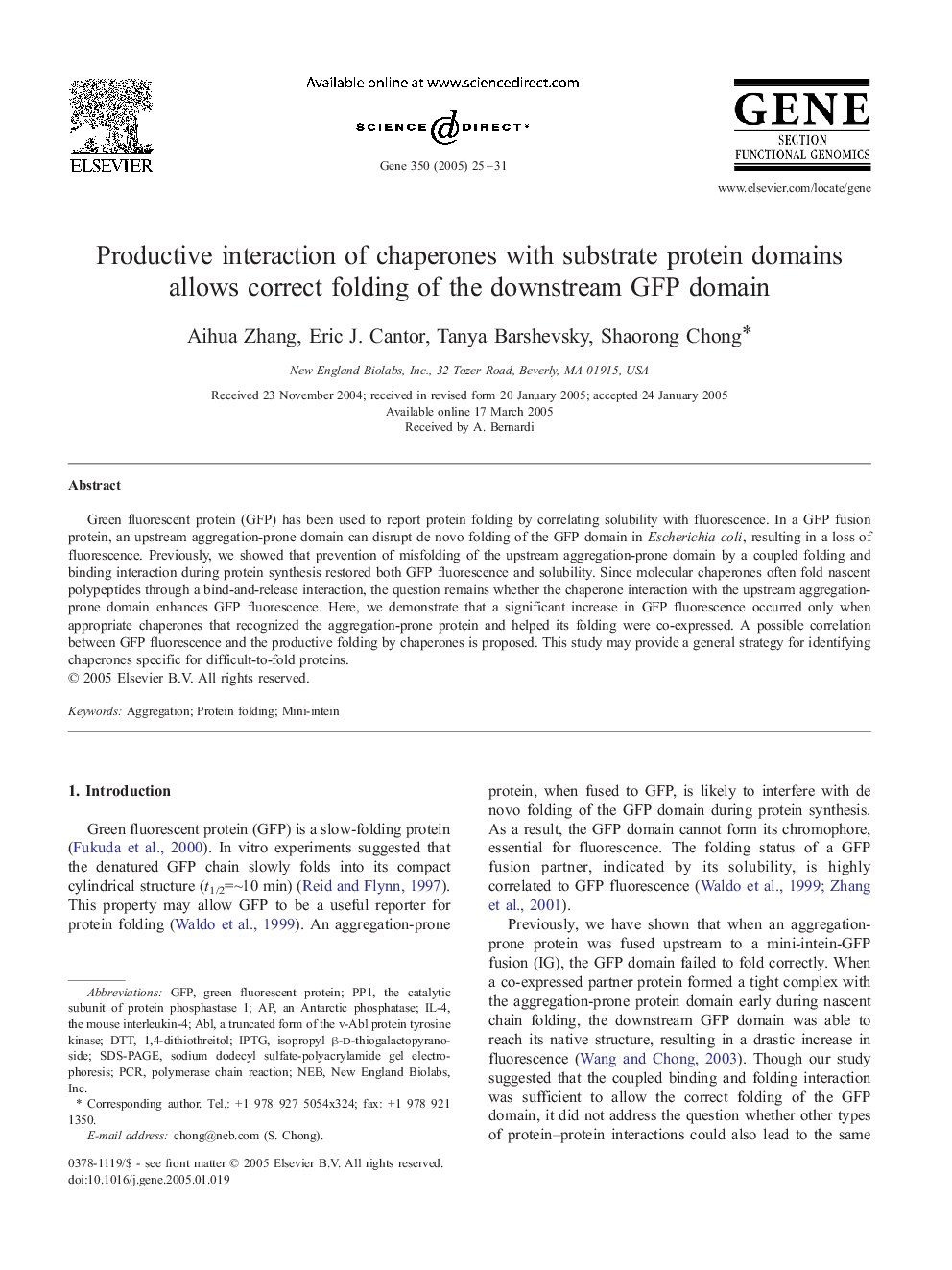| Article ID | Journal | Published Year | Pages | File Type |
|---|---|---|---|---|
| 9127133 | Gene | 2005 | 7 Pages |
Abstract
Green fluorescent protein (GFP) has been used to report protein folding by correlating solubility with fluorescence. In a GFP fusion protein, an upstream aggregation-prone domain can disrupt de novo folding of the GFP domain in Escherichia coli, resulting in a loss of fluorescence. Previously, we showed that prevention of misfolding of the upstream aggregation-prone domain by a coupled folding and binding interaction during protein synthesis restored both GFP fluorescence and solubility. Since molecular chaperones often fold nascent polypeptides through a bind-and-release interaction, the question remains whether the chaperone interaction with the upstream aggregation-prone domain enhances GFP fluorescence. Here, we demonstrate that a significant increase in GFP fluorescence occurred only when appropriate chaperones that recognized the aggregation-prone protein and helped its folding were co-expressed. A possible correlation between GFP fluorescence and the productive folding by chaperones is proposed. This study may provide a general strategy for identifying chaperones specific for difficult-to-fold proteins.
Keywords
Related Topics
Life Sciences
Biochemistry, Genetics and Molecular Biology
Genetics
Authors
Aihua Zhang, Eric J. Cantor, Tanya Barshevsky, Shaorong Chong,
